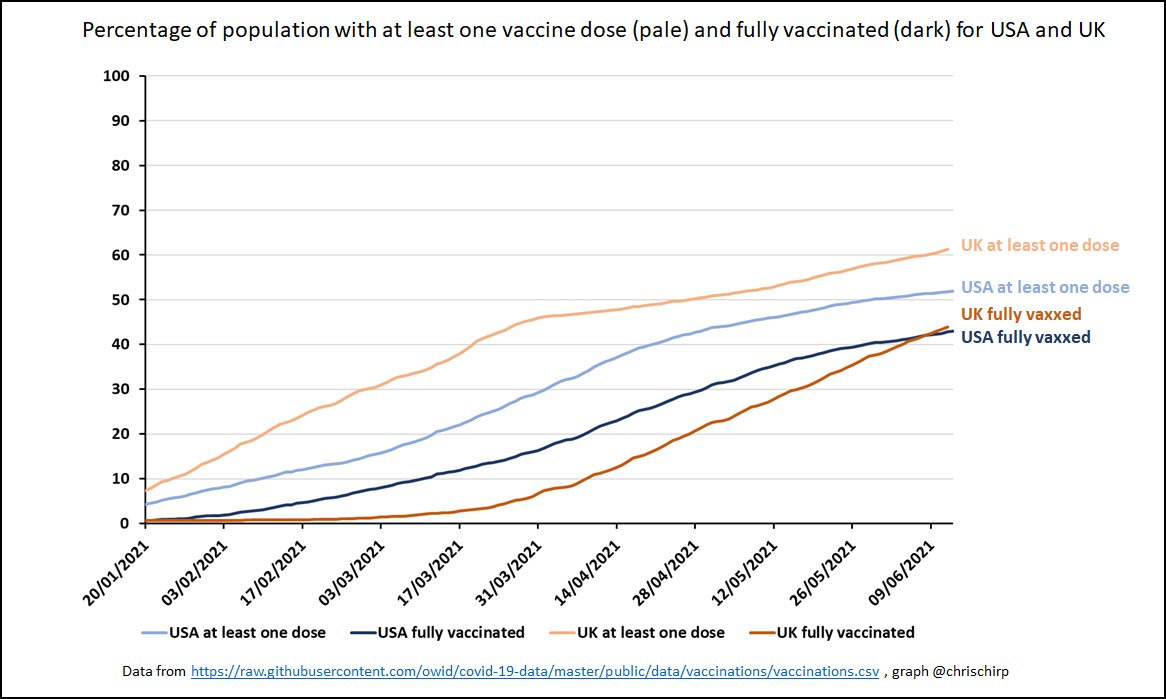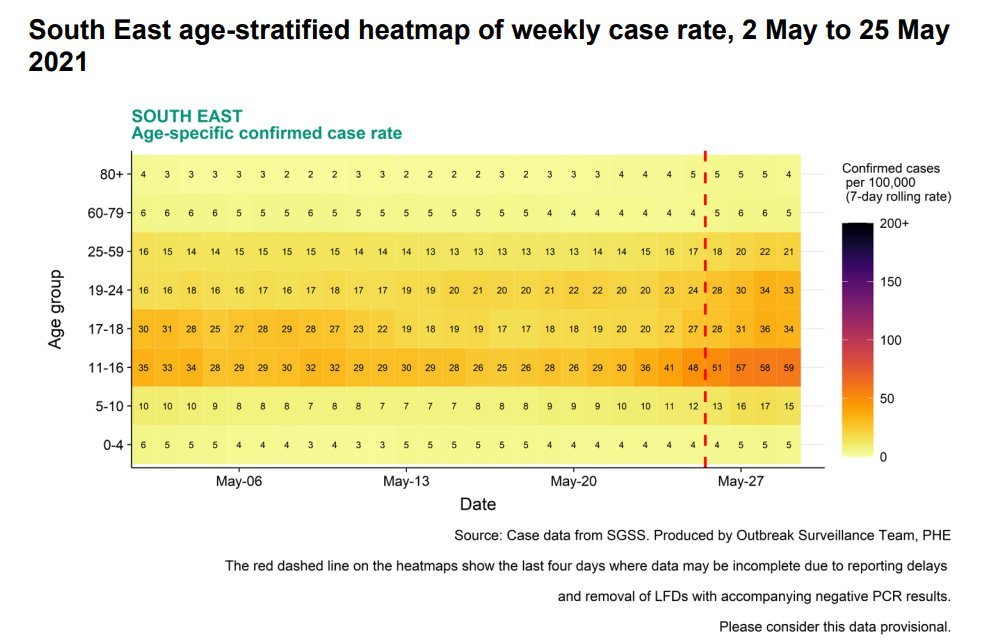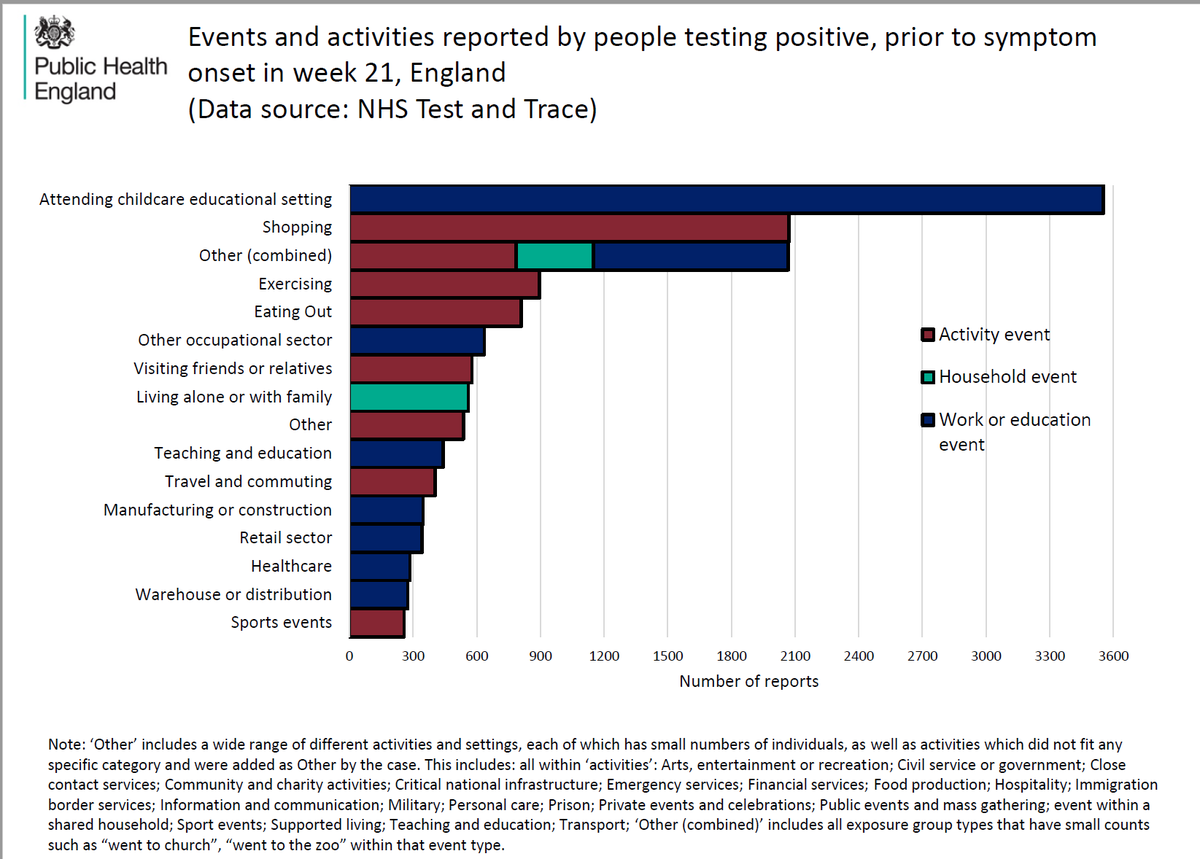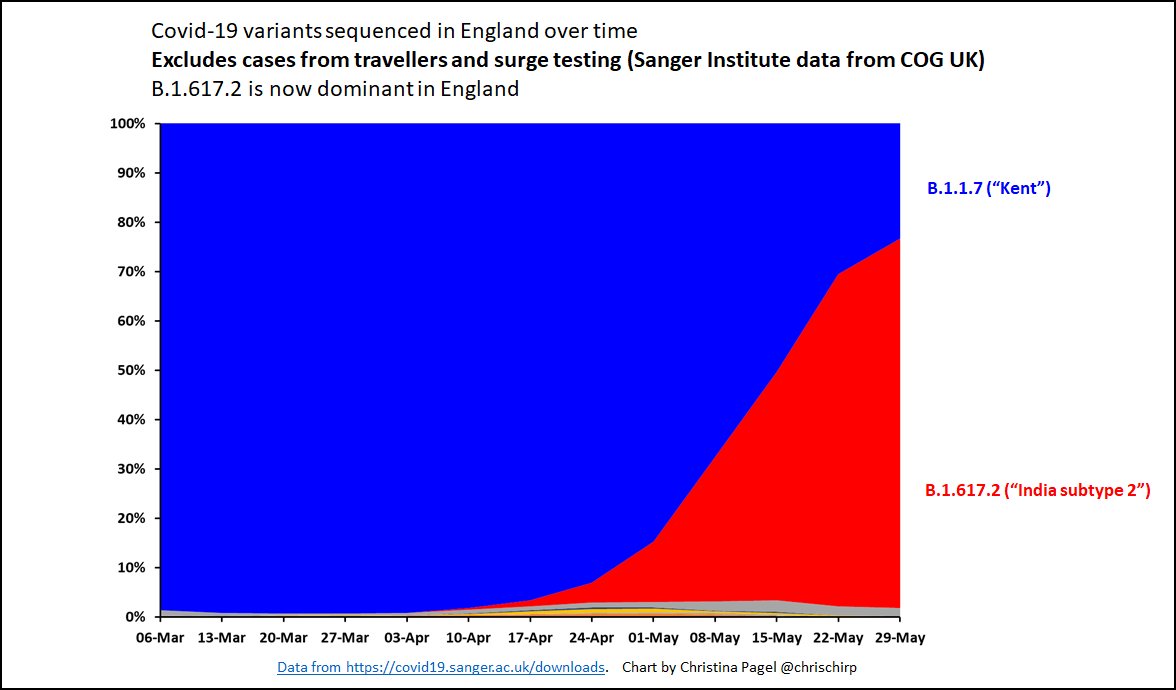
SHORT THREAD on the US & Covid:
The US has made rapid progress in vaccinating its population, and supply is not an issue.
But demand has steadily fallen since April. The UK meanwhile has kept up a more constant rate of vaccination - we've not exhausted our demand yet! 1/5
The US has made rapid progress in vaccinating its population, and supply is not an issue.
But demand has steadily fallen since April. The UK meanwhile has kept up a more constant rate of vaccination - we've not exhausted our demand yet! 1/5

And this is translating into population coverage.
The UK is ahead of the US now in both first doses *and* people fully vaccinated (even with our longer interval between doses) - and our coverage is increasing faster than the US. 2/5
The UK is ahead of the US now in both first doses *and* people fully vaccinated (even with our longer interval between doses) - and our coverage is increasing faster than the US. 2/5

The US has more vaccine hesistancy than the UK and this is now making itself felt - with particularly Republican states having lower rates of vaccine uptake.
States are trying to incentivise vaccination through prizes, food, beer...
newsweek.com/states-sending… 3/5
States are trying to incentivise vaccination through prizes, food, beer...
newsweek.com/states-sending… 3/5
But if the US remains stuck below 50% of population fully vaccinated then this could be a problem for controlling Covid.
Particularly as the Delta variant (more transmissible, more severe, dominant in UK) is rapidly spreading there. 4/5
Particularly as the Delta variant (more transmissible, more severe, dominant in UK) is rapidly spreading there. 4/5

Daily cases in the US are as low as they've ever been but they've stopped falling.
I would not be surprised if they start going up rapidly if Delta becomes dominant in a few weeks, just as we have seen here in the UK. And the US will have lower vaccine protection. :-( 5/5
I would not be surprised if they start going up rapidly if Delta becomes dominant in a few weeks, just as we have seen here in the UK. And the US will have lower vaccine protection. :-( 5/5

• • •
Missing some Tweet in this thread? You can try to
force a refresh



















